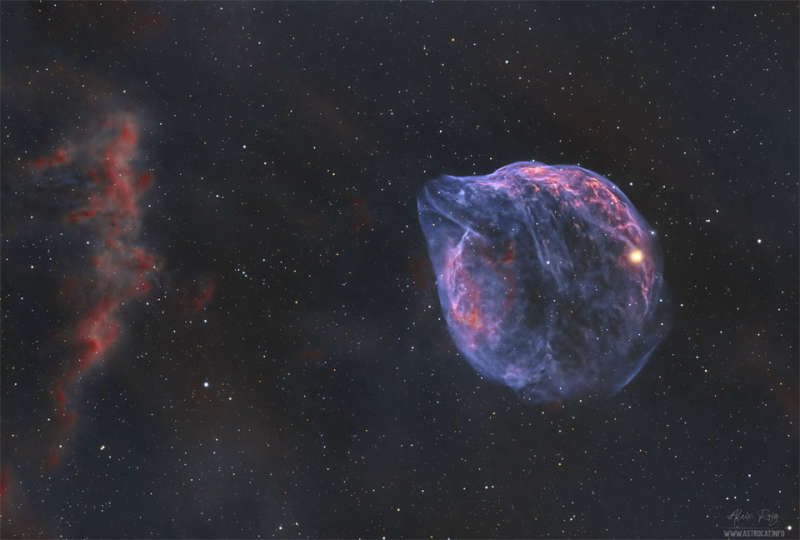
|
Credit & Copyright: Aleix Roig
(AstroCatInfo)
Explanation:
Which star created this bubble?
It wasn't the bright star on the bubble's right.
And it also wasn't a giant space
dolphin.
It was the star in the blue nebula's center, a famously energetic
Wolf-Rayet star.
Wolf-Rayet stars in general
have over 20 times the mass of
our Sun and expel fast
particle winds that can create
iconic
looking
nebulas.
In this case, the resulting star bubble spans over 60 light years, is about 70,000
years old, and happens to look like the head of a dolphin.
Named
Sh2-308 and dubbed the
Dolphin-Head Nebula,
the gas ball lies about 5,000
light years
away and covers as much sky as the
full moon -- although it is much dimmer.
The nearby red-tinged clouds on the left of the
featured
image
may owe their glow and shape to energetic light emitted from the same
Wolf-Rayet star.
|
January February March April May June July August September October November December |
| ||||||||||||||||||||||||||||||||||||||||||||||||
NASA Web Site Statements, Warnings, and Disclaimers
NASA Official: Jay Norris. Specific rights apply.
A service of: LHEA at NASA / GSFC
& Michigan Tech. U.
Based on Astronomy Picture
Of the Day
Publications with keywords: Wolf-Rayet star
Publications with words: Wolf-Rayet star
See also:
- APOD: 2025 March 17 Á Thors Helmet
- APOD: 2025 February 3 Á Wolf Rayet Star 124: Stellar Wind Machine
- APOD: 2025 January 29 Á Dust Shells around WR 140 from Webb
- Sharpless 308: The Dolphin Head Nebula
- APOD: 2024 January 9 Á Thors Helmet
- Wolf Rayet 124
- APOD: 2023 February 8 Á Stellar Wind Shaped Nebula RCW 58
